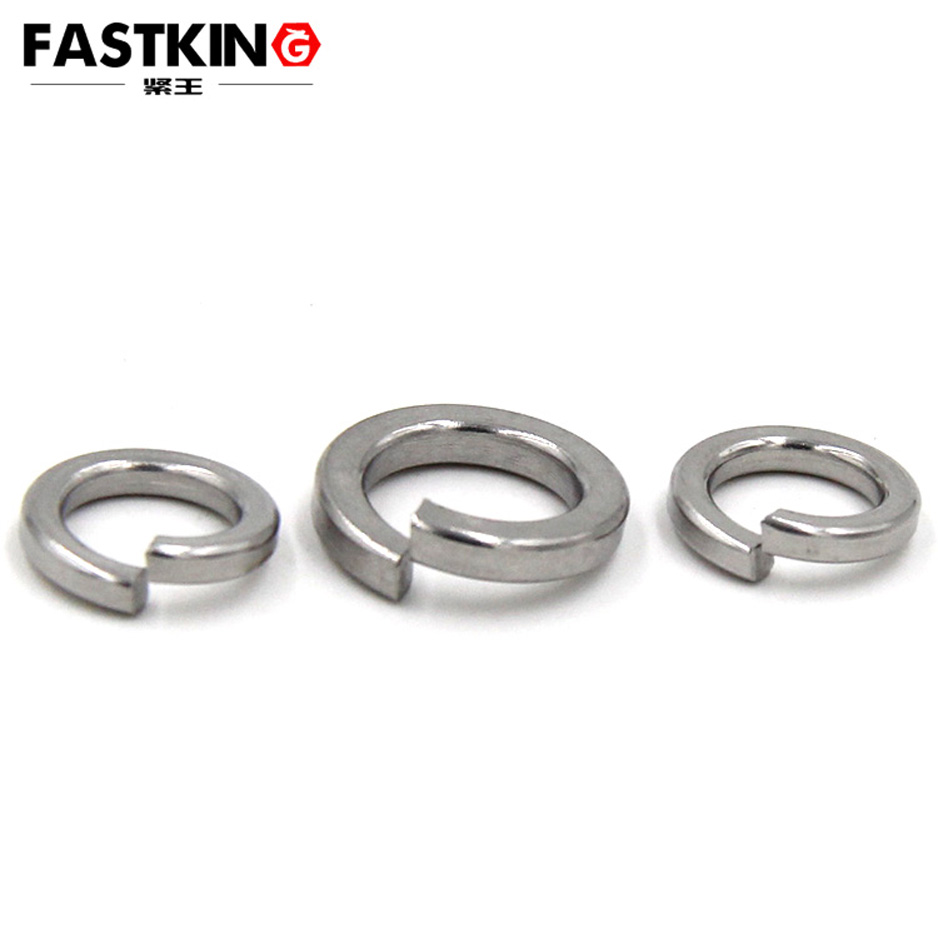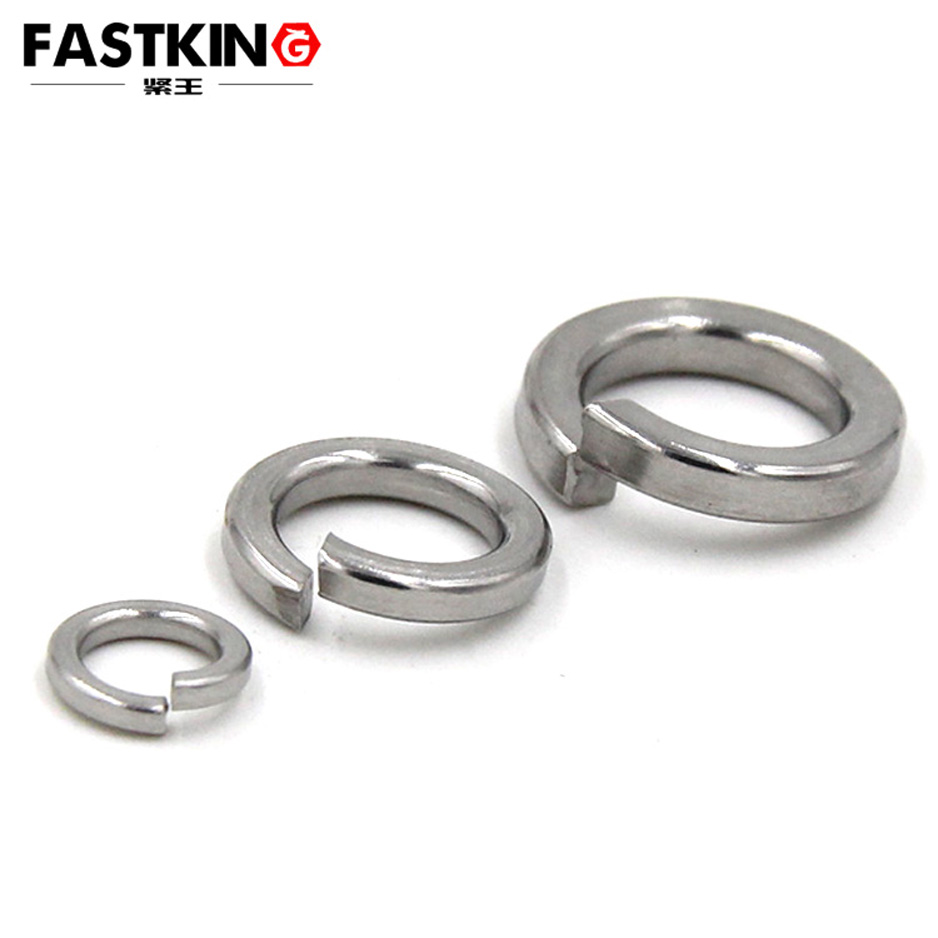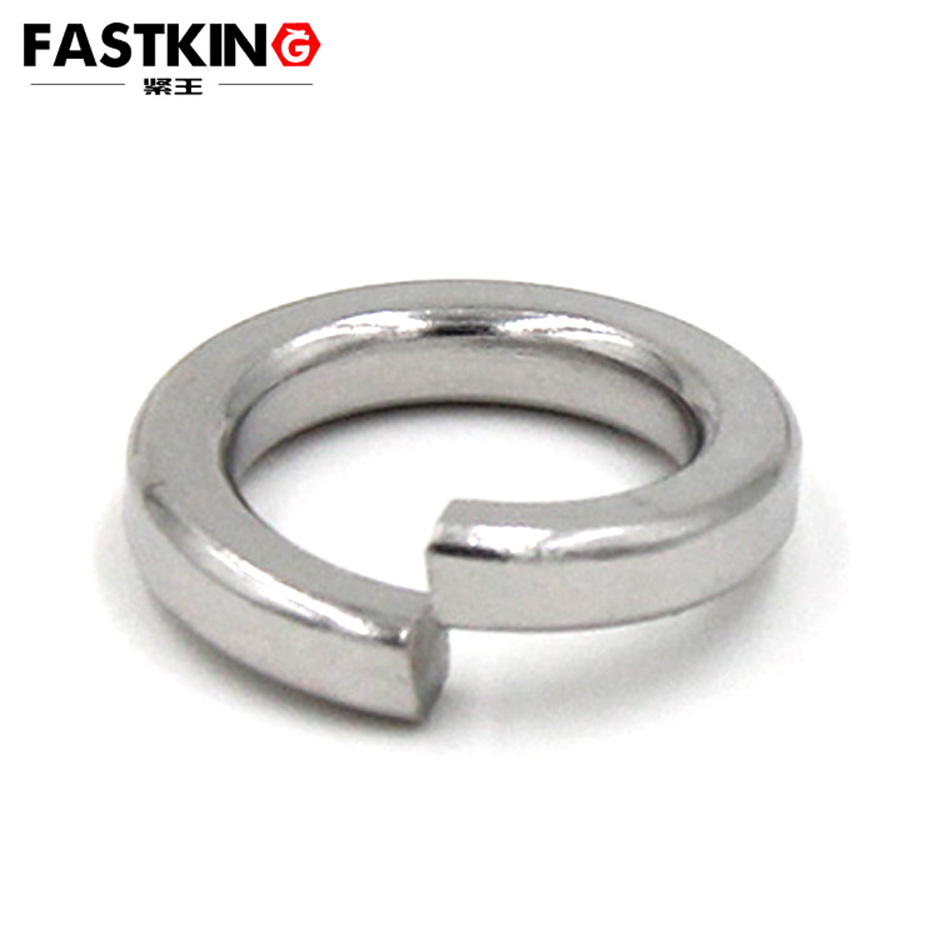Spring washers are simple yet effective anti-loosening fasteners widely used in machinery, automotive manufacturing, construction engineering, and other fields due to their unique elastic properties and reliable anti-loosening performance. This seemingly simple component effectively prevents fastener loosening caused by vibration through the continuous pressure generated by its elastic deformation.

I. Core Advantages of Spring Washers
Spring washers are made from high-quality spring steel or stainless steel, undergoing precision stamping and heat treatment to achieve excellent elastic properties and fatigue resistance. Their hardness can reach HRC42-48, ensuring sufficient strength and durability. The unique split design allows them to produce elastic deformation under pressure, creating continuous anti-loosening force.
In terms of mechanical performance, spring washers can withstand over 5,000 vibration cycles without failure, far exceeding the anti-loosening performance of flat washers. The axial force generated by their elastic deformation can reach 10-15% of the fastener's preload, effectively compensating for preload loss caused by vibration.
These washers feature a standardized size design, making installation simple and requiring no special tools. The unique split design ensures both elastic performance and easy observation of installation status. Standardized specifications and sizes ensure excellent interchangeability and compatibility.

II. Proper Usage Techniques for Spring Washers
When installing spring washers, ensure that the fastener surface is clean and flat. Place the spring washer between the nut or bolt head and the fastened component, ensuring the correct orientation of the split. Apply appropriate preload during tightening to create moderate elastic deformation in the washer. Avoid over-tightening, which can cause the washer to fail.
During routine maintenance, regularly check the condition of the spring washers and replace them if necessary. Inspect the deformation and surface condition of the washers, and replace any that show permanent deformation or cracks. Store spring washers in a dry, ventilated area, avoiding direct sunlight and chemical corrosion.
Common failures include permanent deformation and cracking. These can be identified by visual inspection and elasticity checks. Replace any failed washers promptly to avoid compromising anti-loosening effectiveness.
III. Typical Application Scenarios for Spring Washers
In the machinery sector, spring washers are widely used in anti-loosening applications for engines, gearboxes, pump bodies, and other vibration-prone areas. Their reliable anti-loosening performance ensures stable equipment operation. In automotive manufacturing, they are commonly used in critical areas such as chassis, suspension systems, and powertrains, meeting the demands of vehicle vibration environments.

In construction engineering systems, spring washers are used in steel structure connections, equipment installation, and pipeline fastening, where their stable anti-loosening performance ensures structural safety. In the rail transportation field, they are applied in fastening bogies, car body connections, and signaling equipment, providing reliable protection for train operation.
With their excellent performance and wide applicability, spring washers have become an essential component in the field of anti-loosening fastening. As high-end manufacturing continues to evolve, spring washers will play an increasingly important role in emerging fields such as new energy vehicles and heavy equipment, providing a solid foundation for reliable equipment connections.
